
explore the area
the path
of the
mighty eland
A river without an end that is also mountain range but that does have an end. An historic Mission surrounded by long gone herds of giant antelopes that have only left their paths surrounding English country gardens. A magical valley! Which despite its beauty will test the toughest self-propelled warrior.
by David Bristow
As we leave the coastal plain, over the saw-tooth mountains into the high Grabouw-Elgin valley, we are effectively following the route taken by the Trek Boers – hardy independent stock farmers who lived a semi-nomadic lifestyle that was fixed by their determination to keep ever out of reach of Dutch, and later British, authority in Cape Town. They were, in effect, the first Afrikaners who created their own culture and language at the southern tip of Africa.
At the far end of this cool-climate wine- and fruit-producing valley you’ll pass the Houwhoek (hold tight on the corner) Hotel. Its pub is not the oldest in the country, but it was the first to be established on the wagon and coach route eastwards. One really shouldn’t come all this way and then not at least pop in for a quick one under its towering eucalyptus trees. Descending via Kat Pass to a narrow valley, the Van der Stel Pass opens out at the former Dutch East India Company outpost on the Bot River, set up to trade cattle and butter (botter/bot) with the Khoi of the area in the 1670s. We are now in the Overberg (over the mountain), the country’s so-called breadbasket region.

The breadbasket of South Africa, an area the locals know as the Ruens, from the Dutch for whaleback hills that define the region.
The original farm here, Compagnesdrift, is now the home of Beaumont hand- and foot-crafted wines, also deserving of a step-in. A hard slog over Jacque’s Pass brings us to Elandskloof (eland’s gorge) Farm, the Epic base for this and the next three nights. You might have noted the description eland/gantou recurring: it was these, most massive of all antelope, that forged the migration routes that were followed by Khoi herders and later white settlers across the Boland and into the Overberg.
It was these, most massive of all antelope, that forged the migration routes that were followed by Khoi herders and later white settlers across the Boland and into the Overberg.
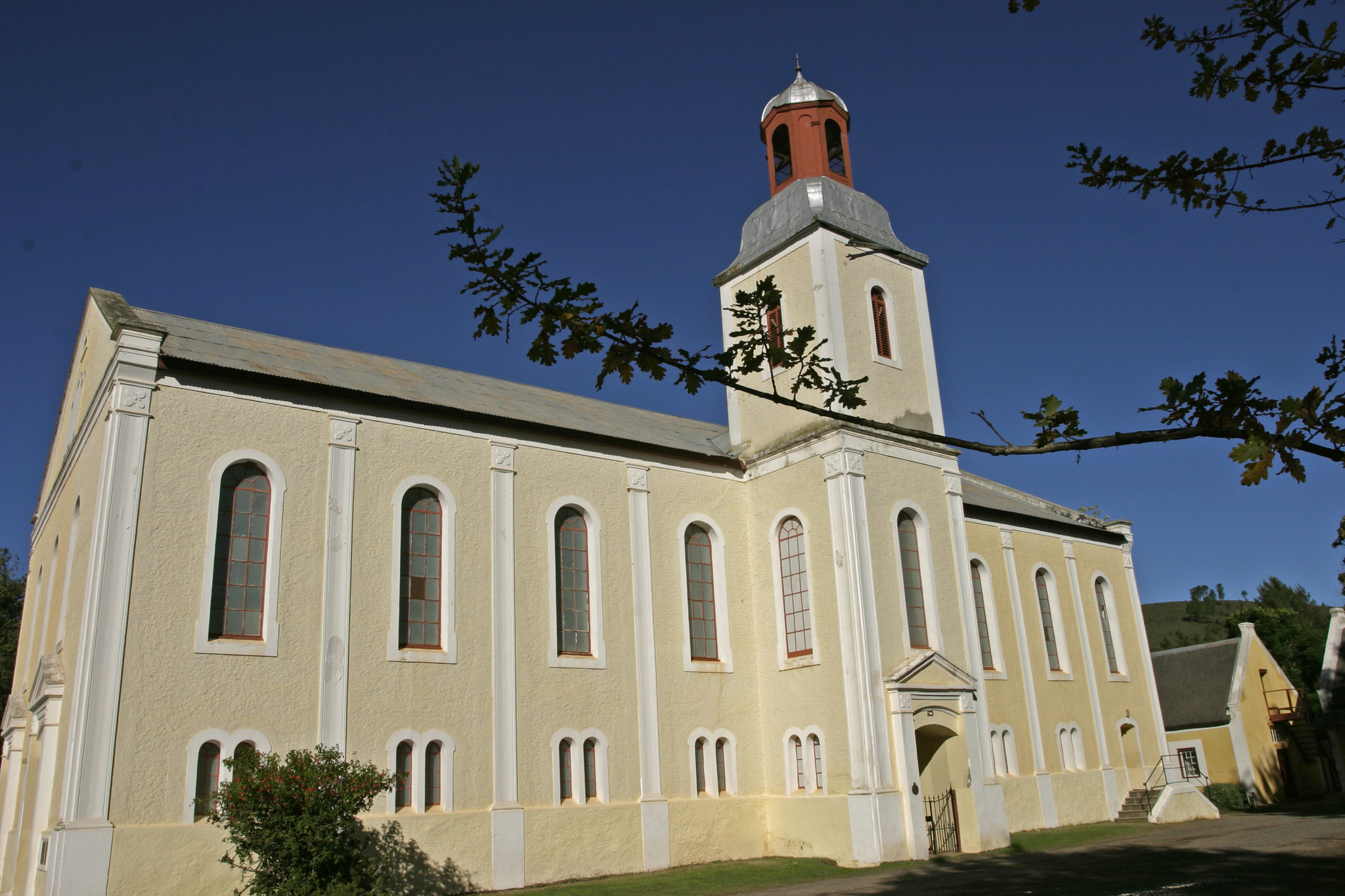
Genadendal – the valley of mercy – is the site of the oldest mission station established in the country, to minister to the indigenous Khoi people.
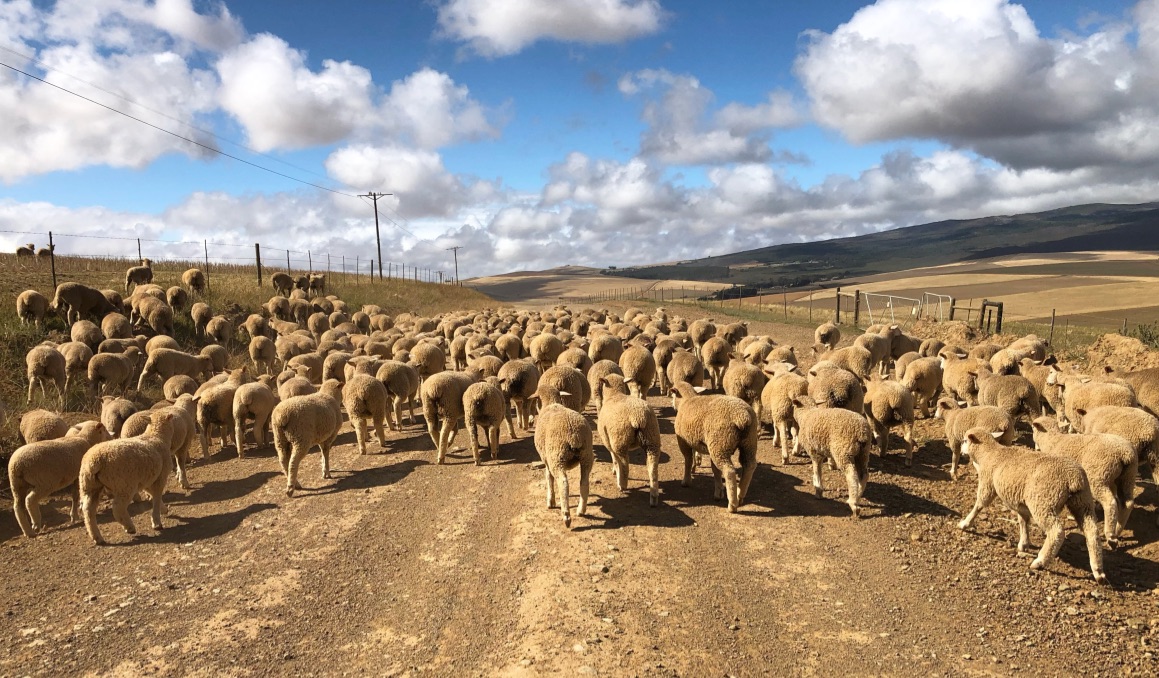
The Overberg (over the mountains) district is a major wheat and sheep farming area, well known for its traffic jams.

Pastoral scenes like this can be deceiving: you’ll be challenged by the hills around Greyton and Genadendal as anywhere on the 2022 Epic.
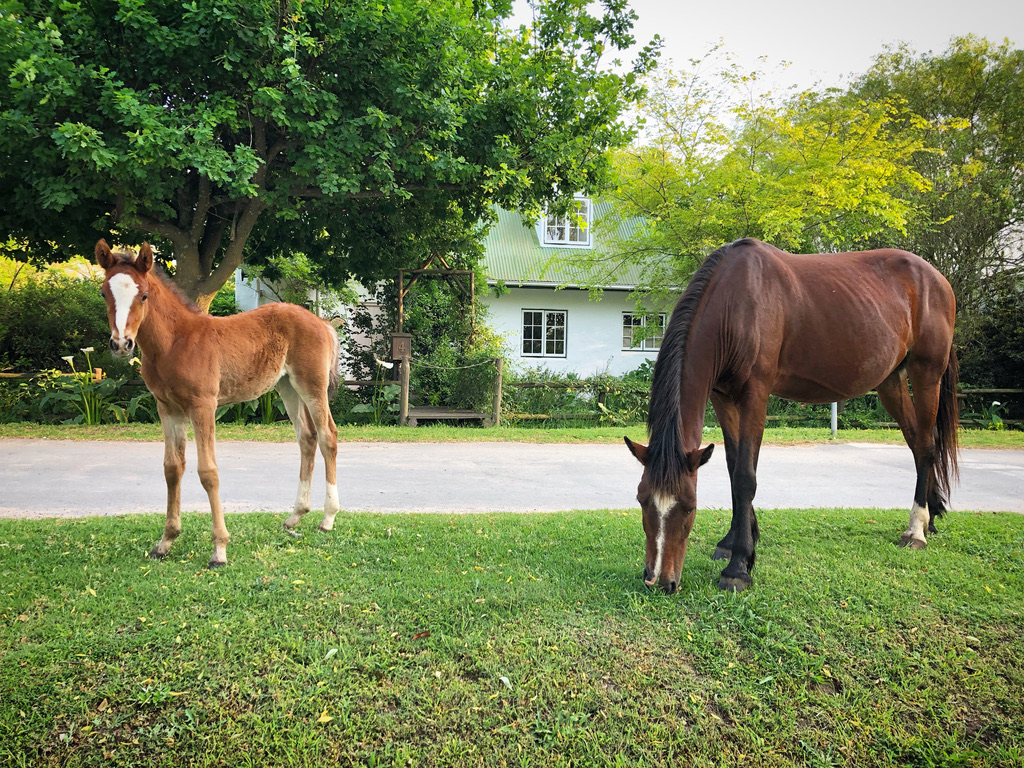
The laidback locals will be bemused by hordes of iron horses racing through their bucolic back roads.
The farm was established on a bank of the river known as “without end” – the Riviersonderend. That’s what it seemed at any rate to the Trek Boers who till then had met only north-south flowing streams, before encountering this one flowing eastwards, as were they. In recent years the estate has added farm holiday and events facilities, which is why we are there. A converted barn and dozen guest cottages encapsulate the old Cape farm spirit.
Tracing a line along the Sonderend Mountains takes riders to Genadendal (dale of peace), which demarcates the first European mission established at the Cape, back in 1738. The plan of German-Czech Moravian missionary George Schmidt was to give the local Khoi people basic education and crafting skills. Just around that time a smallpox plague decimated the indigenous population, who were then forced into labour on settler farms and towns. The emerging Genadendal settlement protected its residents from the indignities suffered by most of the region’s mixed-race peoples, but over time they came to live and work alongside the large slave population (which hailed from all around the Indian Ocean) and soon became one mixed-race group, first known as Cape Malay and later Cape Coloured. As you ride through the village, which retains most of its 18th and 19th century structures, the residents there will give you the most enthusiastic welcome of the entire ride. The Germanic-style church and other mission buildings dwarf the much more humble, mostly charming cottages.
As you ride through the village, which retains most of its 18th and 19th century structures, the residents there will give you the most enthusiastic welcome of the entire ride.

Greyton is as close as you’ll find to an English village in this corner of Africa.
The next place of interest on stage ride-outs from Elandskloof will be Greyton, town named after …. you guessed, another bigwig, this in the form of Cape Governor Sir George Grey in 1854. Unlike Genadendal, Greyton is more clearly an English-style village and – given its origins – visibly more prosperous (notwithstanding the economic misfortunes of the past two years for this tourism-dependent town).
As with just about every productive spot in the region, it was a Khoi clan, the Hassequas, who first settled the charming valley of the Gobos River that runs out of a gorge in the Sonderend Mountains. The name of the gorge recalls the San hunter-gathers, otherwise known Bushmen, who were in their turn displaced by the Khoi cattle herders: hence its name Boesmanskloof. Back to the Hassequas, they sold out to a Trek Boer named Theunissen and when he packed up wagon and fled east ahead of British rule, it was snapped up by wealthy English settler named Vigne. He bequeathed a portion of the farm Weltevreden (“well satisfied”) as commonage, on which the village laid its foundations.
Of interest in a country long divided along racial lines, properties were made available to buyers of any race, nationality or religion and at reasonable prices. This was the only town in the Cape in which full title deeds, water rights and grazing rights were offered to anyone. Much of the original village remains intact including the old leiwater (irrigation) street furrows, a blacksmith’s forge, two churches (one British the other Dutch), some of the early dwellings including a shepherd’s cottage that is now incorporated into the Old Potter’s Inn on the main road.
This was the only town in the Cape in which full title deeds, water rights and grazing rights were offered to anyone.
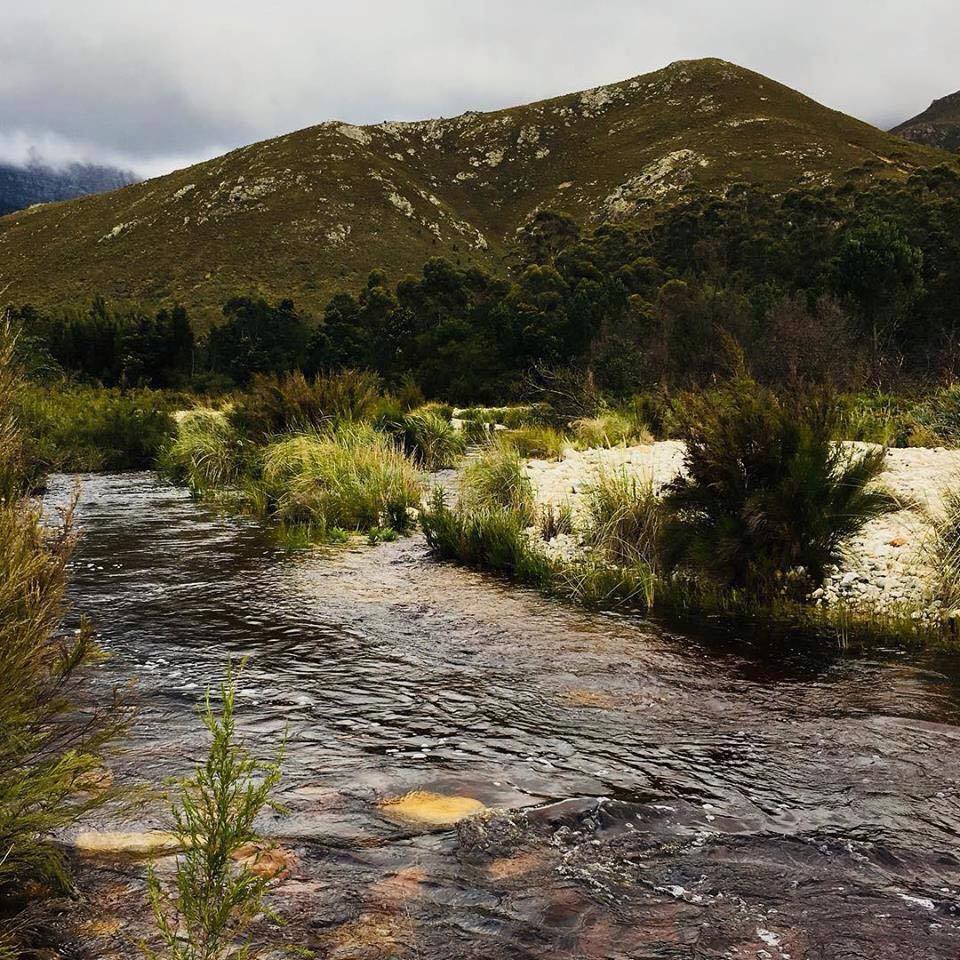
The Riversonderend range is not otherwise well endowed with flowing water, but for the Gobos River that flows into the “river with no ending”.
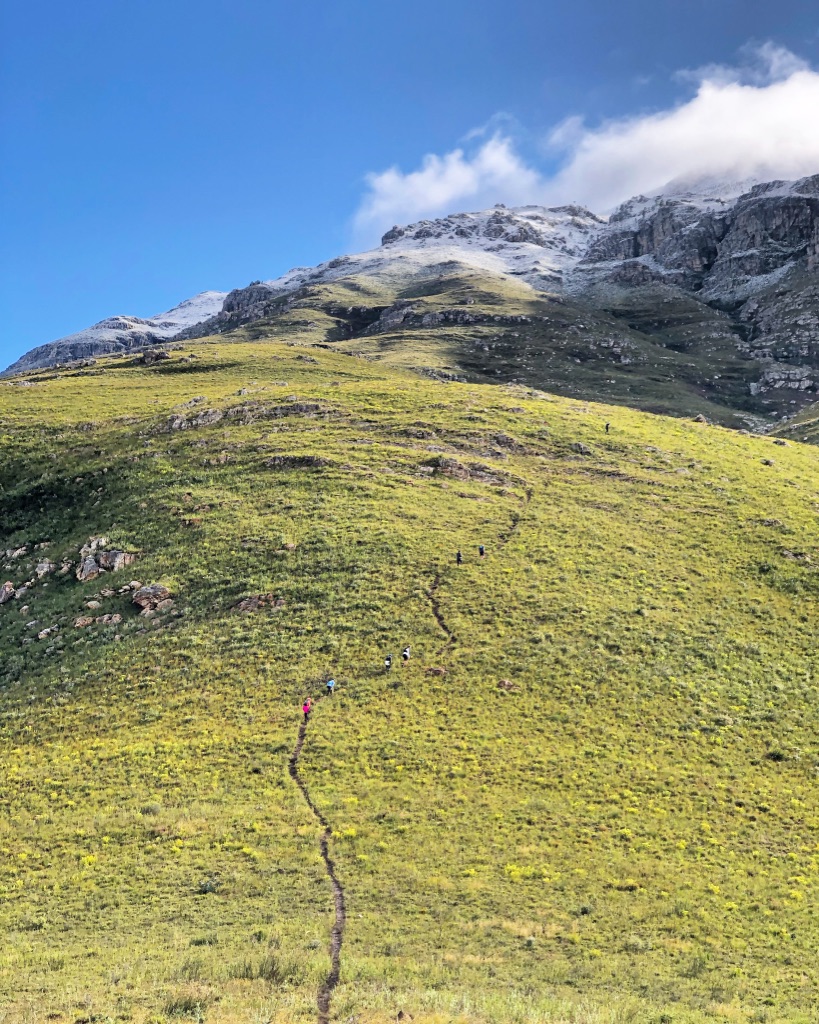
The Sonderend Mountains don’t look particularly challenging– excepting up close when you are pedalling up them.
Much of the commonage too remains and is crisscrossed with walking and cycling paths. For serious hikers the Boesmanskloof Trail offers a there-and-back overnight venture to Mcgregor in the arid Little Karoo rain-shadow valley that will have you thinking “Andalusia?”
The network of singletrack trails you’ll ride around here were hard forged by the Greyton Mountain Bike Club. The terrain hereabouts is in the most part rugged and rocky, with many a slip lurking between one switchback and the next. If you are not alert you’ll find your bike slipping out on the loose shale rubble under-wheel: some of those detached chunks can be real tyre eaters, so focus is the watchword. But then, isn’t that exactly what we came here for?
Photos: Greyton Tourism; Guido Del Giudice; Warrick Kemp;
mallix and SA-Venues.com on flickr